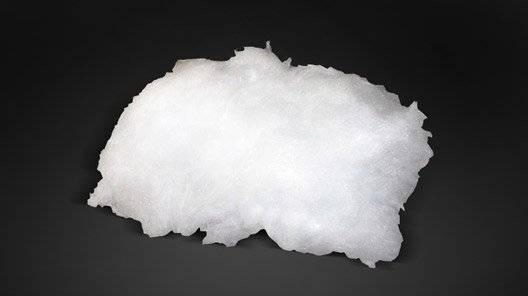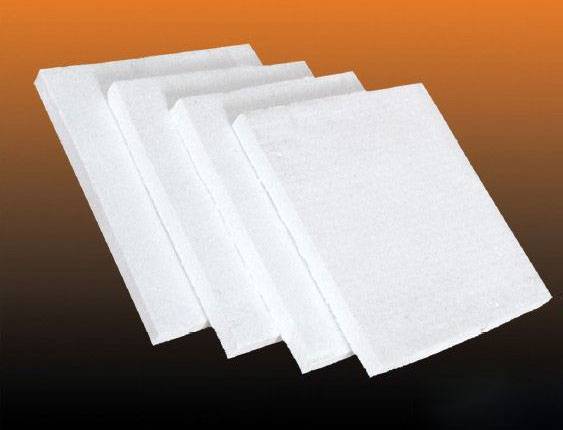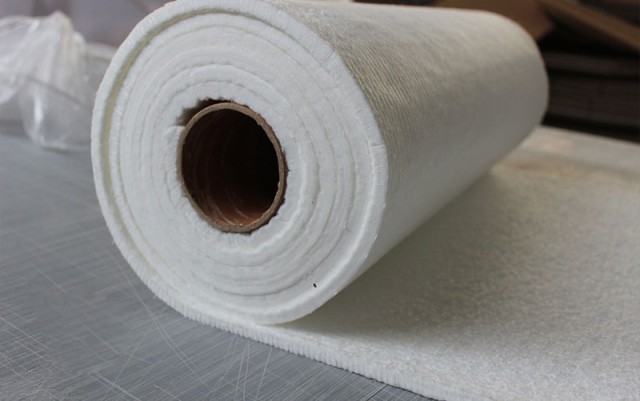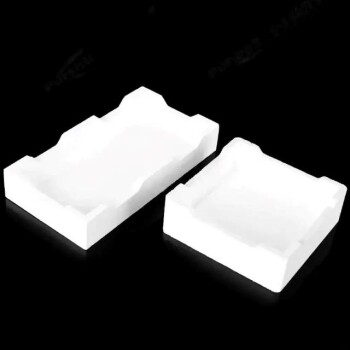Challenges with Existing Lining Materials
Refractory Ceramic Fibers
Aluminum-silicon refractory ceramic fibers are renowned for their exceptional thermal insulation properties. However, their structural integrity becomes compromised at elevated temperatures. This leads to significant shrinkage, which in turn necessitates frequent replacements. The high-temperature environment induces chemical and physical changes within the fibers, rendering them less effective and more susceptible to degradation over time.
To address these challenges, manufacturers have explored alternative materials like mullite fibers, which offer superior thermal stability and minimal shrinkage even under extreme conditions. Mullite fibers, composed of 72% alumina and 28% silicon oxide, maintain their structural integrity at temperatures up to 1,600°C, making them a more durable and reliable option for high-temperature applications.
| Property | Aluminum-Silicon Fibers | Mullite Fibers |
|---|---|---|
| Thermal Insulation | Excellent | Excellent |
| Structural Stability | Degrades at high temps | Stable up to 1,600°C |
| Shrinkage | High | Minimal |
| Replacement Frequency | Frequent | Rare |
The shift towards mullite fibers highlights a broader trend in the industry towards materials that offer both performance and longevity, ensuring long-term cost savings and operational efficiency.

High-Density Refractory Materials
High alumina bricks and monolithic linings are renowned for their exceptional structural strength, making them a preferred choice for many high-temperature industrial applications. However, these materials come with significant trade-offs. One of the primary drawbacks is their susceptibility to thermal shock, which can cause rapid deterioration under fluctuating temperature conditions. This vulnerability necessitates frequent replacements, adding to operational costs and downtime.
Moreover, high-density refractory materials exhibit lower heat retention properties compared to other alternatives. This means that they require more energy to maintain the desired temperature within furnaces, leading to increased energy consumption and higher operational expenses. The combination of frequent replacements and higher energy requirements underscores the need for more thermally stable and energy-efficient materials in high-temperature environments.
In contrast, mullite fiber linings offer a superior alternative with their exceptional thermal stability and minimal shrinkage, as highlighted in the subsequent sections of this article.
Advantages of Mullite Fibers
Chemical Stability and Thermal Resistance
Mullite fibers, which are primarily composed of 72% alumina and 28% silicon oxide, demonstrate exceptional chemical stability and thermal resistance. This unique composition allows these fibers to maintain their structural integrity and resist chemical degradation even under extreme conditions. Notably, they exhibit minimal shrinkage at temperatures as high as 1,600°C, making them ideal for applications requiring prolonged exposure to high heat.
In comparison to other lining materials, such as refractory ceramic fibers and high-density refractory materials, mullite fibers stand out due to their superior thermal stability. While refractory ceramic fibers may suffer from structural changes at high temperatures, leading to shrinkage and the need for frequent replacement, mullite fibers remain stable. Similarly, high alumina bricks and monolithic linings, though strong, are less resistant to thermal shocks and have lower heat retention, necessitating more frequent maintenance and replacements.
The high chemical stability of mullite fibers ensures that they do not react with the materials they come into contact with, reducing the risk of contamination and enhancing the longevity of the lining. This characteristic, combined with their minimal thermal shrinkage, contributes to their effectiveness in maintaining the integrity of high-temperature industrial furnaces.
In summary, the combination of high chemical stability and minimal thermal shrinkage at extreme temperatures makes mullite fibers a superior choice for high-temperature furnace linings, offering significant advantages over traditional materials in terms of durability and performance.
Mechanical Properties and Customization
Mullite fibers boast a uniform diameter and minimal slag ball content, which significantly enhances their mechanical properties. This uniformity allows for the creation of dense, tightly woven mats that can withstand high-stress environments. The fibers' consistent structure also facilitates their customization into durable liners, tailored to fit the specific dimensions and requirements of high-temperature furnaces.
Moreover, the low slag ball content in mullite fibers reduces the risk of structural defects, ensuring that the liners maintain their integrity over extended periods. This customization capability is particularly advantageous in industrial settings where precise fitting is crucial for maximizing energy efficiency and thermal insulation. The ability to tailor mullite fiber liners to exact specifications not only improves their performance but also extends their operational lifespan, offering a cost-effective solution in the long run.
Energy Efficiency and Cost Savings
Mullite fibers, despite their higher initial investment, deliver substantial economic benefits over their lifecycle. The primary advantage lies in their exceptional thermal stability and minimal shrinkage, which result in significant energy savings. By maintaining a consistent thermal environment, mullite fibers reduce the energy required to maintain high temperatures, thereby lowering operational costs.
Moreover, the thermal stability of mullite fibers contributes to faster process cycles. Unlike traditional refractory materials that may degrade under constant high-temperature exposure, mullite fibers maintain their structural integrity, allowing for more efficient and continuous operation. This not only enhances productivity but also reduces downtime, further augmenting cost savings.
Maintenance costs are also substantially reduced with mullite fiber linings. The low shrinkage and high chemical stability of mullite fibers mean that they require less frequent replacements compared to other materials. This translates to fewer maintenance interventions, reduced labor costs, and extended service life of the furnace, making mullite fibers a financially prudent choice in the long run.
Market Adoption and Cost Considerations
Initial High Costs
The high initial cost of mullite fiber linings has been a significant barrier to their widespread adoption, despite the compelling long-term savings and benefits they offer. This upfront expense often deters potential users, who may be hesitant to invest in a technology that seems to demand a substantial financial commitment without immediate returns. However, it's crucial to consider the broader economic picture, which includes not only the initial purchase price but also the operational and maintenance costs over the lifespan of the lining.
To better understand this financial landscape, it's helpful to break down the costs into several key components:
| Cost Component | Description |
|---|---|
| Initial Purchase Price | The upfront cost of acquiring mullite fiber linings, which is higher compared to traditional materials. |
| Installation Costs | The expenses associated with installing the mullite fiber linings, which may include labor and specialized equipment. |
| Operational Savings | Long-term benefits such as reduced energy consumption, faster process cycles, and lower maintenance costs due to the thermal stability and minimal shrinkage of mullite fibers. |
| Maintenance Costs | The cost of maintaining the lining over its lifespan, which is significantly lower for mullite fibers compared to other materials that require frequent replacements. |
While the initial investment in mullite fiber linings may seem steep, the operational savings and reduced maintenance costs over time can offset this expense, making it a financially viable option in the long run. This approach aligns with the broader trend in industrial applications towards adopting technologies that offer sustainable, long-term benefits, even if they come with a higher initial price tag.

Composite Insulation Modules
Composite modules utilizing HTZ 2600 ceramic fibers have recently gained traction in the industrial sector, aiming to bridge the gap between performance and cost. These modules are engineered to deliver superior thermal insulation properties, similar to traditional mullite fibers, but at a significantly reduced price point. The HTZ 2600 fibers, known for their high-temperature stability and low thermal conductivity, are integrated into these composite modules to ensure they maintain their structural integrity and insulation capabilities even under extreme conditions.
One of the key advantages of these composite modules is their ability to offer a more cost-effective solution without compromising on performance. This is particularly beneficial for industries that require high-temperature insulation but are constrained by budget limitations. The modules are designed to be easily installed and can be customized to fit various furnace configurations, making them a versatile option for different industrial applications.
Moreover, the use of HTZ 2600 fibers in these composite modules not only addresses the initial high costs associated with mullite fiber linings but also enhances the overall energy efficiency of the furnaces. By reducing heat loss and maintaining consistent temperatures, these modules contribute to faster process cycles and lower operational costs over time. This dual benefit of cost reduction and improved performance makes composite insulation modules an attractive option for industries looking to optimize their high-temperature furnace operations.
Weight and Energy Efficiency
Mullite fiber linings stand out due to their significantly lower weight compared to traditional high-density refractory linings. This reduction in weight translates directly into enhanced energy efficiency and accelerated process cycles. The lightweight nature of mullite fibers allows for easier installation and handling, which in turn reduces the overall operational burden on the furnace system.
Moreover, the lighter weight of mullite fibers contributes to a more efficient heat distribution within the furnace. This efficient heat distribution minimizes energy losses, leading to substantial energy savings over time. The faster heating and cooling cycles enabled by mullite fiber linings further optimize the furnace's operational efficiency, allowing for more rapid and consistent production processes.
In contrast, high-density refractory linings, while offering high strength, often struggle with maintaining consistent thermal performance due to their greater mass. This mass requires more energy to heat and cool, resulting in prolonged process times and increased energy consumption. The superior energy efficiency of mullite fibers, therefore, not only enhances the furnace's operational speed but also contributes to long-term cost savings by reducing the overall energy expenditure.

Conclusion
Long-Term Cost-Effectiveness
When evaluating the total cost of ownership, mullite fiber linings stand out as a financially prudent choice. Their superior thermal stability ensures minimal shrinkage even under extreme temperature conditions, reducing the frequency of replacements and maintenance. This longevity translates into substantial savings over time, offsetting the higher initial investment.
Moreover, the mechanical strength of mullite fibers contributes to their durability, further enhancing their cost-effectiveness. Unlike other materials that may require frequent repairs or complete overhauls, mullite fiber linings maintain their structural integrity, leading to fewer disruptions in production cycles.
In addition to these direct cost benefits, mullite fibers also offer indirect savings through improved energy efficiency. Their ability to retain heat more effectively reduces energy consumption, lowering operational costs. This dual advantage—both in terms of material longevity and energy savings—makes mullite fiber linings a compelling option for industries seeking long-term financial stability.
Related Products
- High Temperature Alumina (Al2O3) Furnace Tube for Engineering Advanced Fine Ceramics
- Vacuum Heat Treat Furnace with Ceramic Fiber Liner
- 1700℃ Muffle Oven Furnace for Laboratory
- 1400℃ Muffle Oven Furnace for Laboratory
- 1200℃ Muffle Furnace Oven for Laboratory
Related Articles
- Vacuum Induction Melting Furnace vs Arc Melting Furnace: Choosing the Right Equipment for Your Process
- Molybdenum Vacuum Furnace: High-Temperature Sintering and Heat Treatment
- High Pressure Tube Furnace: Applications, Safety, and Maintenance
- Precautions for installing silicon carbide stick
- Ultimate Guide to High Pressure Tube Furnaces: Applications, Types, and Benefits















